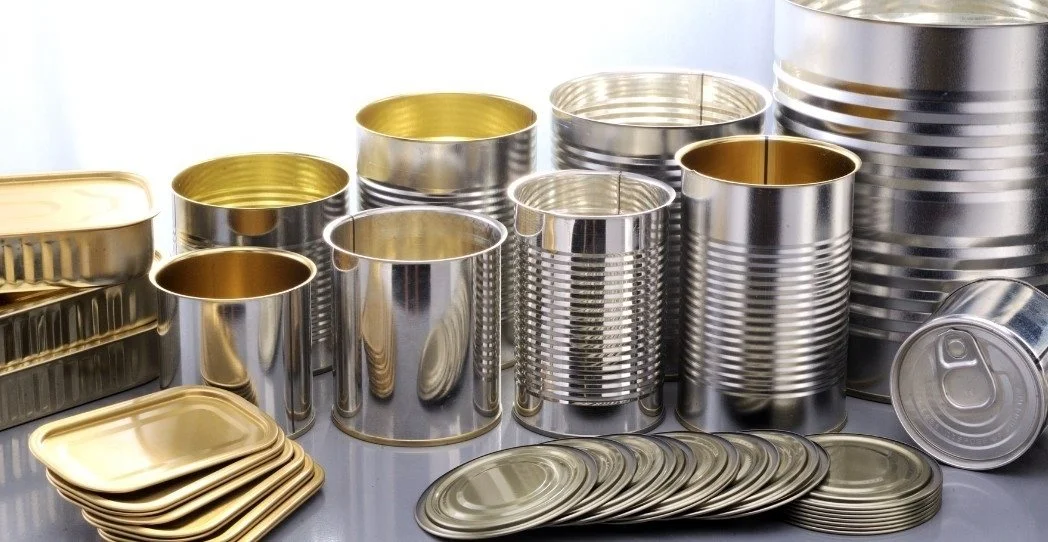Driven by global economic and societal factors as well as environmental awareness, the popularity and demand for metal packaging are on the rise. The primary sector driving demand is the food and beverage industry.
1.Metal Cans remain in high demand
Among all different types of metal packaging (such as cans, bottles, drums, caps, and closures), cans have always been the most popular. This trend is expected to continue in the coming years. By 2026, the global can market is projected to grow by 4.8%, valued at $10.1 billion, $993 million. Demand for two-piece cans is expected to grow the fastest, followed by three-piece cans. Aluminum, tin, and steel are popular metals used for manufacturing cans, accounting for one-third of all metal packaging. Aluminum is poised to become the most widely used material for manufacturing cans in the future.
2.Diversification
Cans are widely used for food, beverages, cosmetics, pharmaceuticals, paints, etc. While the primary demand at the global level comes from the food and beverage industry, regional differences exist. Cans are predominantly used for beverages and processed foods in North America and Latin America, Europe, and Japan. In the Asia-Pacific region excluding Japan (APEJ), cans are used for packaging oils, while in the Middle East, cans are used for non-food purposes such as cosmetics, pharmaceuticals, and industrial products. APEJ is expected to become the primary market for cans by 2022, valued at $27.456 billion.
3.Expanding global food and beverage industry
The global demand for ready-to-eat and packaged food and beverages, especially alcoholic and non-alcoholic beverages, is creating new markets for metal cans.
The United States has always been and continues to be the largest market for metal packaging. However, in many developing countries, especially in the Asia-Pacific region, increasing disposable income and urbanization are driving the demand for packaged food and beverages. China, India, and Brazil are countries where the demand for canned foods leads to increased use of metal packaging. By 2022, China is expected to become the largest market for canned foods, making cans the largest market as well.
Europe, known for its safe food production, is an important exporter of food and specialties, highly popular in other countries. Over the past decade, European food exports have doubled.
Moreover, the common EU market and policies supporting the smooth flow of goods within Europe ensure an efficient food supply chain and improve market access. The penetration rate of Europe's own food, beverage, and alcoholic beverage markets is expected to increase from 12% in 2018 to 16% in 2022. Although these figures include fresh foods, there is still significant growth potential for metal packaging, especially in beverages. By 2022, the food and beverage market is projected to reach $38.699 billion, an 8.7% increase in revenue from 2018.
4.Environmental considerations
Aluminum cans are considered more environmentally friendly, with a recycling rate in Europe exceeding 70%, whereas plastic cans pose significant global challenges in disposal compared to plastic. Furthermore, there is considerable concern over chemical transfer from plastic food and water containers and the plastic coatings inside cans, as they have potential health implications.
Companies are attempting to outdo competitors by establishing a brand that represents sustainability. These companies are moving away from plastics and opting for new types of metal cans with healthy interior coatings. For example, the bottled water industry in Nordic countries chooses metal cans because they are healthier and more environmentally friendly.
5.Virtuous cycle
Aluminum, tin, and steel packaging are becoming increasingly popular at various levels of the economy, from consumers and product manufacturers to the packaging industry. As the demand for healthy metal packaging grows, so does the investment in innovation in this field. This, in turn, yields packaging materials that meet consumer demands and tastes while being environmentally friendly.
Website:https://www.jiangyinforward.com/p-contact.html



